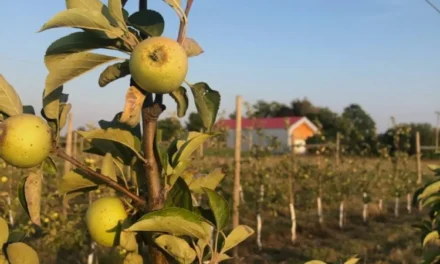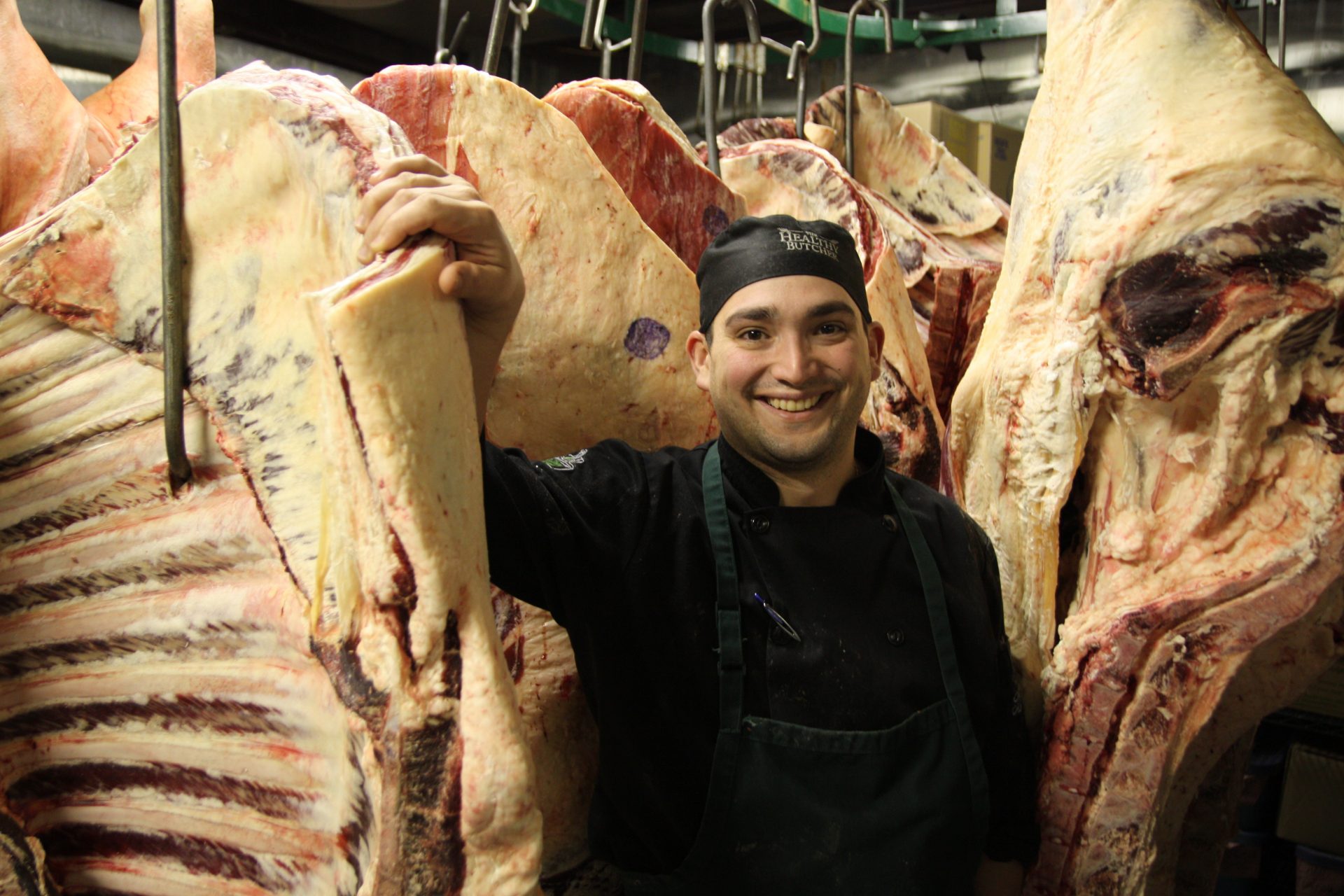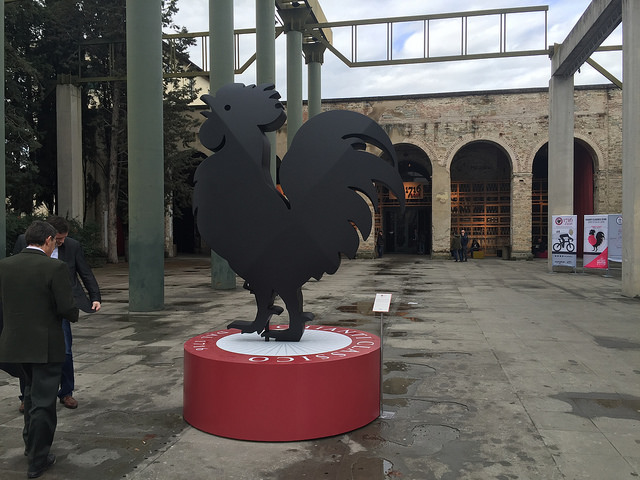By Mario Fiorucci, Co-Founder of The Healthy Butcher, a ‘Certified Good Food Fighter‘
We’re coming up on another holiday season for roasts. Dry Roasting needn’t mean roasting until it is DRY! It can be a very rewarding and low intensity method to prepare a tasty meal. In a previous blog we explained how to braise. Braising is a form of roasting meat using wet heat, “wet” because the cooking is being done in liquid. While braising is perfect for tougher cuts of meat, it is not appropriate for cooking joints that are tender; the appropriate technique is to dry roast or simply “roast”.
Roasting can be as simple as throwing a cut of meat into the oven and removing when done; unfortunately, simple isn’t always best. Let’s discuss the three keys to successful roasting.
KEY #1: SEARING
Why sear? Searing was once widely thought of as the way to keep moisture from escaping during the cooking process. Food scientists have proved the theory of moisture loss false. However, searing does accomplish an important task: Enhanced flavour! When we sear we are browning the outside of the meat at a high temperature, causing a change in natural sugars through a process called the Maillard Reaction. Why we find this browning to be so agreeable to our palates is still up for debate. Many scientists believe it is a part of our genetic history passed on to us by our ancient ancestors who discovered it was easier to digest cooked, rather than raw meats. Suffice to say, searing is a matter of flavour and not one of moisture.
Do we sear at the beginning or the end of the process? Generally speaking, searing is best done at the beginning and on the stovetop using a hot pan (cast iron being the best).
There are some exceptions to this rule. For example, when roasting a whole duck, it is recommended to sear at the end once most of the fat (and there’s a lot of fat on a duck) has rendered off. You’ll have to trust your butcher on determining when you’re roasting one of the exceptions. To effectively sear, the best way is to preheat a pan (large enough for your cut) on the stovetop and make sure all parts of the roast have been browned before moving the roast to a pre-heated oven. Sometimes the roast is too large for you to do on the stovetop. In those cases, what you can do is preheat your oven to a very high temperature (like 450F), roast at that high temperature until the meat is nicely browned, then reduce the temperature to 325F and cook at the lower temperature until the desired internal temperature is reached.
KEY #2: COOKING
Sometimes you can skip the cooking process altogether and go straight from searing to resting. This is where knowledge of different cuts comes into play. A three pound tenderloin roast is best served rare. Searing in the oven on a very high heat for half an hour and then letting it rest for twenty minutes is usually sufficient for such a thin, tender, lean roast. Whereas a three pound inside round roast, which has a considerably larger girth than the above mentioned tenderloin, would require about 45 minutes cooking time at 325 F after searing on the stove top. The same rest time would follow.
The key goal in the cooking process is to achieve the appropriate internal temperature, which is dependent on the type of meat and whether you like your meat rare or medium. How long the roasting will take is dependent on the temperature of your oven, the size and shape of the roast, and whether it is bone in or boneless.
A good rule of thumb is to cook all roasts at 325F. This temperature is slightly lower than what many cookbooks call for, but I have found a gentler heat reduces the amount of moisture loss. On the Tonic website I have provided a roasting chart which guides you through techniques and typical internal temperatures for many of the most common cuts.
KEY #3: RESTING
I cannot stress enough how important this stage of the process is. Whether it’s a little pork tenderloin or an entire hip of beef, resting is essential to the tenderness and juiciness of the finished product. The reason is this: The resting allows the meat to redistribute the juices from the centre outwards so that the drier outer parts regain their moisture and tenderness. No amount of resting can bring back moisture that’s already evaporated. This won’t trouble those who desire a well-done roast. For those of us who believe there is nothing finer than a rare or medium-rare roast, this is something to pay close attention to. If you carve a roast 10 minutes after removing it from the oven, you will have a pool of juice on your carving block. If you had waited an additional 10 minutes, all of that moisture would have remained in the meat. The larger the roast, the longer the rest time should be. Always tent with foil to ensure the meat is still hot when eating.
Our website has a great reference tool for cooks, with appropriate temperatures and times for roasting perfection. The Healthy Butcher Ultimate Roasting Chart.
Remember, a good roast always begins at the farm…







